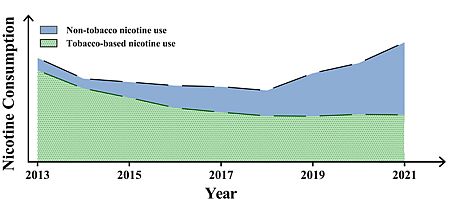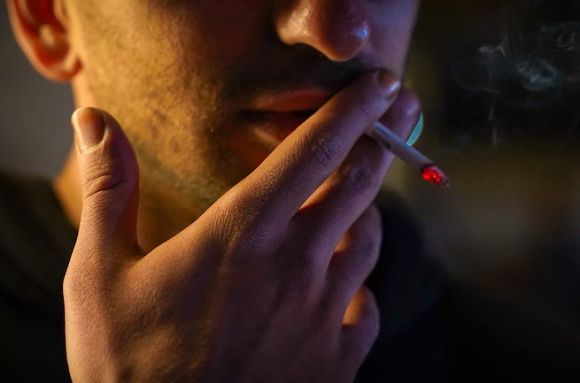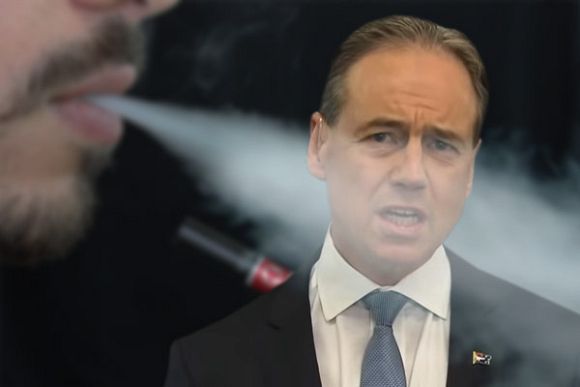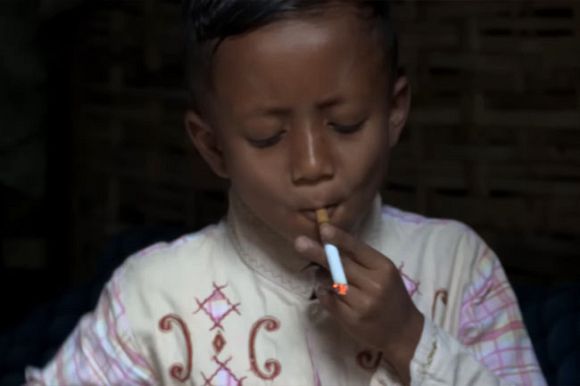Over the past month, both Four Corners and 60 Minutes have done major investigations into Australia’s $5 billion tobacco black market and the criminal gangs who now dominate the industry.
Nick McKenzie’s 60 Minutes report began by squarely laying the blame for the crisis on the Commonwealth Health Department’s tobacco policies.
‘Where there’s smoke, there’s firebombing,’ he began, describing the reality for tobacconists in Victoria and increasingly throughout Australia.
McKenzie continued:
In the last 18 months, as many as 200 shops have been destroyed as criminals try to wrest control of the lucrative illegal tobacco market.
What's concerning, though, is not only the level of violence, but why this thuggery started in the first place by taxing cigarettes so exorbitantly in an attempt to stop people smoking. What the Government has inadvertently created is a thriving black market worth $5 billion a year.
Dan Oakes’ Four Corners report, ‘Tobacco Wars’, began on an equally critical note:
“Bringing death and destruction to Australia's streets, it's costing the Federal Government billions in lost taxes, and threatening decades of hard-won progress in the fight against deadly tobacco.”
Former Australian Federal Police detective superintendent Rohan Pike, who created and led the Australian Border Force’s Tobacco Taskforce in 2015 but now works as a lobbyist for the Australian Association of Convenience Stores (AACS), followed.
Pike said:
“People here are sick of firebombings every second day. And it just gives the impression that law and order is out of control. This policy is perhaps one of the biggest failures in Australian history.”
Australia’s tobacco policy also received a dishonourable mention in the 2025 Federal Budget with the revelation that the fall in the sale of legal cigarettes had led to a precipitous decline in the tobacco excise that was projected to blow a $10 billion hole in the Budget’s prediction of revenue collected over the next four years. The tobacco tax peaked at $16.8 billion in 2019, declined to $10 billion in 2023 and was projected to fall to $6.4 billion in 2028.
For comparison, the money required for supplementary funding to increase our Medicare billing rates over the next four years was estimated at $8.5 billion.
Commenting on the tobacco tax decline in the Australian Financial Review, economist Chris Richardson labelled Australia’s tobacco tax a $10 billion policy mistake that has fuelled organised crime and worsened health outcomes.
Richardson condemned the absurd increase in tobacco tax:
The politicians got greedy and tobacco taxes are already up by more than a factor of five since 2010.
However, Australia has raised tobacco taxes so far and so fast that we’ve spawned a vast black market.
The tax take is telling us that Australians jumped into the black market. That’s been a godsend for criminals. This is a market that is just as profitable as heroin, but with a fraction of the legal consequences if you’re caught.
Chris Richardson was largely correct, except that putting a heavy tax on smoking was done for two reasons: to raise revenue, as he said, but secondly to discourage people from smoking. When the health authorities saw the excise was down, they misinterpreted the data as proof that their tax policies were working, but wishful thinking is never a good basis for policy. The wastewater testing (below) showed the nicotine was still there, but it was masked by the black market.
The chief executive of the AACS, Theo Foukkare, called on the Federal Government to freeze the excise on tobacco products for four years, along with legalising and regulating smoking cessation tools such as vapes, and strengthening the crackdown on illegal tobacco:
“The definition of insanity is doing the same thing over and over again and expecting a different outcome. The Government, with their policy around tobacco excise and vaping prohibition, is doing exactly that. If it is revenue that the Government is after, it should legalise and tax cannabis.”
The two sides of the nicotine debate
‘...raising tobacco taxes is one of the most effective mechanisms for governments to reduce population consumption of tobacco.’
~ ‘Tobacco in Australia’, Australian Department of Health.
Australia’s road to tobacco policy hell was paved with the very best of intentions, to reduce the consumption of tobacco, so how did it go so wrong?
Since the Health Department regarded price as the best way to reduce tobacco use, it adopted the crazy policy of increasing the tobacco tax by 12.5% every year, starting in 2013 and ending in 2021. In 2023, in his second budget, Treasurer Jim Chalmers announced a further 15% increase in the tobacco tax, estimating it would bring in an extra $3.3 billion over the next three years.
As the graph indicates, the Treasurer’s prediction was out by about minus ten billion dollars, which shows how woefully ignorant our Treasurer is about how excise tax works.

For Bay FM, I interviewed Dr Alex Wodak, the tobacco harm reduction adviser to the Harm Reduction Australia Board, who explained excise tax in a way even Jim Chalmers might understand:
“Economists talk about a Laffer curve. This occurs when trying to estimate what the optimal taxation rate for a commodity is. If the taxation rate is too low, government revenue is not optimised because the rate is too low. If it is too high, government revenue falls away and there is widespread noncompliance, and people go to the black market. That's the situation we are in with cigarette taxation in Australia.”
Harm reduction relies on helping consumers choose safer methods of consumption. Unlike prohibitionists, harm reductionists avoid a judgemental approach to drug taking or drug takers but seek to educate consumers about how to avoid harms.
Lung cancer is a major cause of death for tobacco smokers, but this results from inhaling the tars caused by burning tobacco, not from the nicotine. So the harm reduction approach is to encourage other means of consumption like vaping, which is inhaling nicotine aerosols, nicotine patches and so on.
Professor Simon Chapman is arguably the chief architect of Australia’s disastrous tobacco policies. Interviewed by Four Corners, he argued against reducing the tobacco tax, asserting that big tobacco exaggerates the size of the black market.
Chapman said:
“We have a principle called the scream test. Basically, this means that if you follow the media monitors and follow what the tobacco companies are saying, if they are screaming very loud you know that is a policy that is going to bite hard on their bottom line and the things that they have screamed loudest about throughout my career is probably tax number one.”
Dan Oakes then asked Simon Chapman the question many were pleased he did:
“You have a deep-seated hatred of big tobacco. Do you think this risks blinding you to what people are saying in good faith?”
Chapman replied, dismissing sincere experts like Rohan Pike and Dr Alex Wodak with this insult:
“I think they should look in the mirror and see that what they are asking for is exactly the same as what Big Tobacco is asking for. Political useful idiots.”
In our interview, Dr Wodak replied, not with an ad hominin attack, but with a policy-based disagreement:
Australia's response to tobacco since 2010, more and more resembles the way Australia and many other countries have responded to the war on drugs with extremism — with the intentional provision of misinformation and disinformation, refusal to have any discussion or debate in public or even in private with people who disagree with that policy, extreme hubris. Really, the long and the short of it is that Australia's response to tobacco since about 2010 has looked more and more like a war on nicotine.
In their commentary in the Australian Harm Reduction Journal, James Martin and Edward Jegasothy agreed with Dr Wodak, arguing that Australia’s intensified regulatory approach toward nicotine control revealed a shift that increasingly resembles a de facto war on nicotine.
Martin and Jegasothy wrote:
‘...recent policies – including increased tobacco taxation and a ban on consumer vapes – have inadvertently fuelled a burgeoning nicotine black market. This has resulted in serious unintended consequences, including increased criminal activity, systemic violence and health risks associated with the proliferation of unregulated nicotine products.’
The combination of sky-high cigarette prices and the Health Department’s overwhelming obsession with cutting smoking rates had combined in a perfect storm to fuel an explosion in Australia’s tobacco black market. Our tobacco policies were creating more harm than they mitigated, mirroring many of the unintended consequences historically associated with drug prohibition.
Dan Oakes also interviewed Health Minister Mark Butler and asked if the Government would consider pausing tobacco tax increases to freeze legal prices and starve the black market of customers.
Echoing Simon Chapman, he replied that this was something the tobacco industry lobbied for, but that would be “raising the white flag” and letting criminals and the industry dictate government policy.
However, he could not deny that organised crime was already controlling the market:
“Well, that's right, they've been able to get a foothold and I regret that that's the case, but, you know, the best time to deal with this would've been five years ago. The second-best time is to deal with it now.”
Rohan Pike disagreed. The best time was a decade ago when he alerted Border Force and the Government to the problem, but denial reigned then as it does now, and his warnings were ignored. Mark Butler’s solution was too little and too late. The black market was so widespread and entrenched that average citizens no longer had any qualms about participating in the black market.
Pike said:
“Given that excise rates are the primary driver of this problem, from the start we should be looking at reducing the excise rates to a level that doesn't encourage people to go to the illicit market.”
Health's response to the rise of vaping
Could Australia’s disastrous tobacco policy possibly get any worse?
Given the geniuses we have running the Health Department, this proved no problem.
Allow me to illustrate:

This is a graphic from the article titled Analysis of wastewater from 2013 to 2021 detected a recent increase in nicotine use in Queensland, Australia. It plots the levels of nicotine measured between 2013 and 2021 in a wastewater treatment plant serving over 100,000 people in southeast Queensland.
Tracing different metabolites, one measuring tobacco-based nicotine use from cigarettes, the other measuring non-tobacco nicotine use from vapes, nicotine patches and other nicotine replacement therapies, it shows the transformation in nicotine consumption between 2013 and 2021 as e-cigarettes or vapes replaced cigarette use. Vapes are recommended as safer than cigarettes because they are free from the tars released by burning tobacco, the major cause of lung cancer in tobacco smokers.
The graph shows how nicotine users’ concerns about lung cancer changed the pattern of nicotine use in Australia. However, the rise of vapes worried the nicotine prohibitionists in the Health Department, and they set about banning vapes and successfully driving vapes, which are comparable in size to the cigarette market, into the black market as well.
Nicotine vapes were made harder to obtain with an ‘enhanced regulatory approach to vaping’, according to the 2023 Budget Papers, which required vape users to obtain a prescription from their doctor to legally obtain vapes. Fruity flavours and colourful packaging were also abolished to make vapes less appealing.
Overwhelmingly, this caused vapers to shift to the black market. The National Drug Strategy Household Survey 2022–2023 reported that 1.8 million Australians smoked tobacco, while 1.5 million used vapes, a figure that had tripled from 2019. A vast majority (87%) of people who had used e‑cigarettes with nicotine reported that they had obtained them without a prescription (from the black market).
Said Dr Wodak:
We have a policy rigidity problem with vaping. The customers, the people who vape, have gone to the black market. The problem with that is they're getting unregulated vapes over which governments have no control, so it it's a failed and futile policy which is unsustainable and sooner or later, I hope, the policy will collapse and the Government will have to introduce a much more realistic policy both for cigarette excise but also for vaping.
Our interview ended with this bizarrely contrarian observation from Dr Wodak who said:
It is a curious situation that we're in, that we have to be grateful to the black market – run, of course, by criminals – but we have to be grateful to the criminals and for the black market that they have helped to accelerate the decline in smoking and switch people who enjoy nicotine to help them switch from high risk deadly cigarettes to low risk, safer vaping. So it's the criminals who have provided the market for people who want to keep on using nicotine.
Dr John Jiggens is a writer and journalist currently working in the community newsroom at Bay-FM in Byron Bay.
 This work is licensed under a Creative Commons Attribution-NonCommercial-NoDerivs 3.0 Australia License
This work is licensed under a Creative Commons Attribution-NonCommercial-NoDerivs 3.0 Australia License
Support independent journalism Subscribe to IA.
















